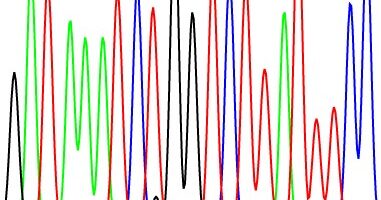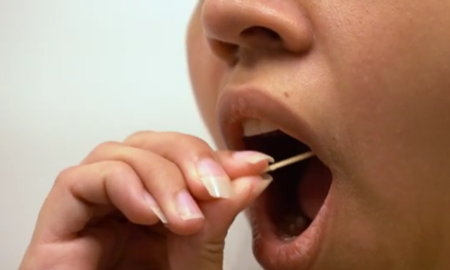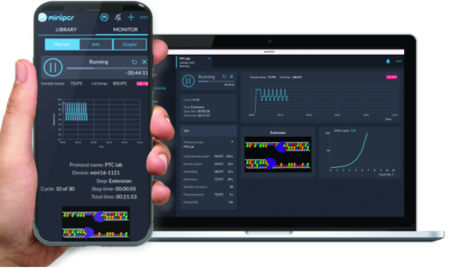Choosing the right agarose percentage for gel electrophoresis
Electrophoresis experiments sometimes list a specific percentage of agarose to use in the gel. Let’s dive into where these recommendations come from so you can pick the right concentration of agarose for your gel electrophoresis experiment.
What does agarose gel percentage mean?
- Scientists typically use agarose gels between 0.5% and 2%.
- Agarose gels are made using agarose powder dissolved in a liquid buffer. The gel percentage is a weight to volume (w/v) unit.
- For example, 1 g of agarose powder dissolved in 100 ml buffer yields a 1% gel.

Why does gel percentage matter?
- In a gel, agarose forms a mesh that acts like a sieve. Gels with a higher percentage of agarose form a mesh with smaller pores. In the image above, you can see that a 1% gel (left panel) has much larger pores than a 2.9% gel (right panel). (Image used with permission from Ed-Daoui and Snabre, 2021)
- In general, higher percentage gels are better for separating smaller DNA fragments, and lower percentage gels are better for separating larger DNA fragments.
- The table below shows common gel percentages and the corresponding size of DNA fragments that can be effectively separated.
| Agarose gel % | Range of effective separation (bp) |
|---|---|
| 0.5% | 2,000 – 50,000 |
| 1.0% | 400 – 8,000 |
| 1.5% | 200 – 3,000 |
| 2.0% | 100 – 2,000 |
How do I pick the right gel percentage for my experiment?
The most important factor is the size of the DNA fragments you are trying to separate.
- Higher percentage gels are better for separating smaller DNA fragments.
- The photos below compare the same DNA fragments run for the same amount of time on a 2% gel vs. a 1% gel.
- Notice that separation of the smaller fragments (200-50 bp) is much better on the 2% gel.

- Lower percentage gels are better for separating larger DNA fragments.
- The photos below compare the same DNA fragments run for the same amount of time on a 2% gel vs. a 1% gel.
- Notice that separation of the larger fragments (1,500-10,000 bp) is much better on the 1% gel.
 Other considerations:
Other considerations:
- Higher percentage gels take longer to run.
- Lower percentage gels tear more easily. It can be helpful to use a 2% gel for students or others new to pipetting.
What other factors will affect band resolution in my gel?
While agarose concentration is the most important variable, other experimental choices will affect the separation of bands during gel electrophoresis:
- Buffer composition:
- TAE (Tris-acetate-EDTA) buffer is often used for DNA separation.
- TBE (Tris-borate-EDTA) buffer offers better resolution for smaller DNA fragments.
- DNA stain:
- Depending on the chemistry of the nucleic acid stain used, bands can run sharper and straighter, or be less well-defined.
- For example, read our detailed comparison between SeeGreen™ vs. GelGreen® DNA stains.
- Loading volume: Overloading of samples can lead to blurry or smeared bands, reducing resolution. Sometimes, less is more!
Related resources:










